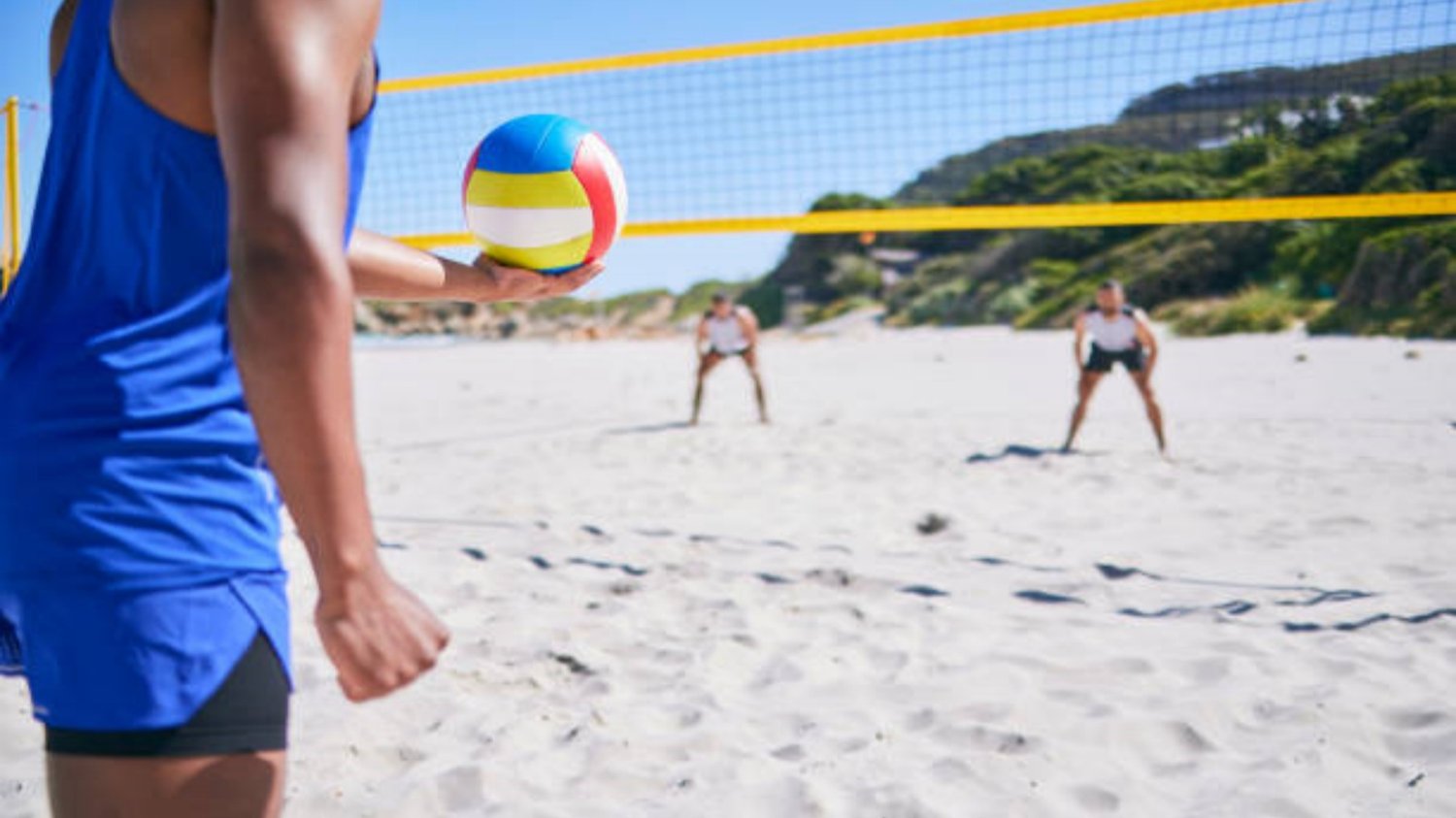Introduction: Beach Volleyball Basics
Beach volleyball is a popular sport, especially during the summer months, and it is played on sand courts. Unlike indoor volleyball, a beach volleyball is designed to withstand the outdoor environment, especially sand, which is the primary playing surface. One crucial aspect of beach volleyball is the material used to make the ball. In this article, we will provide you with information on
What material is a beach volleyball made of?.
Paragraph 1: Outer Cover Material
The outer cover of a beach volleyball is typically made of synthetic leather or a composite leather material. Synthetic leather is made from plastic, and it is durable and water-resistant. It is also not as heavy as real leather, which makes it easier to control and handle. Composite leather, on the other hand, is a blend of synthetic and natural leather. It is more expensive than synthetic leather but provides better grip and control.
Paragraph 2: Stitching Material
The stitching of a beach volleyball is crucial because it holds the ball together. The material used for stitching is typically a strong thread made of synthetic materials such as polyester or nylon. Both of these materials are strong and resistant to moisture, which is ideal for beach volleyball.
Paragraph 3: Bladder Material
The bladder is the inner part of the beach volleyball that is inflated to give it shape and bounce. The material used for the bladder is typically made of rubber or a synthetic material such as Butyl. Rubber is a popular choice because it provides good bounce and retains its shape well. Butyl is also a popular choice because it provides excellent air retention and is more durable than rubber.
Paragraph 4: Size and Weight
Beach volleyball has specific size and weight requirements. According to the FIVB (International Volleyball Federation), a beach volleyball must weigh between 260 and 280 grams and have a circumference of 66 to 68 centimeters. The ball's weight and size are regulated to ensure consistency and fairness during a match.
Paragraph 5: Durability and Maintenance
Beach volleyball balls are designed to withstand the harsh outdoor conditions and are durable. However, they do require regular maintenance to ensure their longevity. It is recommended to keep the ball away from direct sunlight, which can cause the ball to crack or fade. Also, keeping the ball clean and dry after use will prolong its life.
Paragraph 6: Environmental Impact
Beach volleyball balls are typically made of synthetic materials, which have a negative environmental impact. The production of synthetic materials produces greenhouse gases, which contribute to climate change. Also, when the ball wears out, it is not biodegradable and will remain in the environment for hundreds of years.
Paragraph 7: Alternative Materials
There are alternative materials available that can reduce the environmental impact of beach volleyball balls. For example, one company has developed a beach volleyball made from recycled plastic bottles. The balls are still durable and meet size and weight regulations, but they have a significantly lower environmental impact.
Paragraph 8: Ball Brands
There are many brands of beach volleyballs available, and each has its unique features. Popular brands include Molten, Mikasa, Wilson, and Spalding. It's essential to choose a brand that meets your needs and budget, whether you're a professional or recreational player.
Paragraph 9: Buying Tips
When buying a beach volleyball, consider the material, size, and weight. Look for a ball made of durable materials that will last, and make sure it meets the size and weight regulations. Also, consider your level of play, as professional players may require a higher quality ball.
Paragraph 10: Conclusion
In conclusion, a beach volleyball is typically made of synthetic leather or composite leather for the outer cover, a strong synthetic thread for stitching, and rubber or Butyl for the bladder. When buying a beach volleyball, it's important to consider the material, size, and weight to ensure you get a ball that meets your needs. And remember, there are alternative materials available to reduce the environmental impact of beach volleyball balls.
Quote Inquiry
Contact us!

